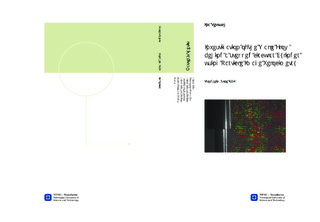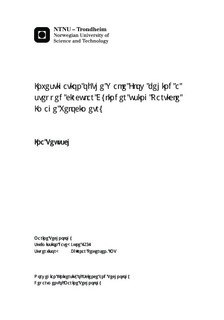| dc.contributor.advisor | Pettersen, Bjørnar | nb_NO |
| dc.contributor.author | Teutsch, Ina | nb_NO |
| dc.date.accessioned | 2014-12-19T12:07:28Z | |
| dc.date.available | 2014-12-19T12:07:28Z | |
| dc.date.created | 2012-11-08 | nb_NO |
| dc.date.issued | 2012 | nb_NO |
| dc.identifier | 566088 | nb_NO |
| dc.identifier | ntnudaim:7914 | nb_NO |
| dc.identifier.uri | http://hdl.handle.net/11250/238189 | |
| dc.description.abstract | Subject of the present study was the investigation of the wake behind stepped circular cylinders. Experiments were performed using particle image velocimetry (PIV). Cylinder models with diameter ratios D/d=1, D/d=6/5 and D/d=2 were investigated at Reynolds numbers Re_{D}=2243.6, Re_{D}=12820.5 and Re_{D}=51282.1 with respect to the large diameter. Of main interest were the influences of step size and Reynolds number on the formation of vortex shedding cells. Mean flow characteristics and instantaneous captures of the flow field were analyzed in order to gain insight into vortex development in the wake. Spectral analysis was applied to obtain information on the number of forming vortex shedding cells.It was found that an increase in Re_D leads to a decrease in eddy formation length $L_f$. At the largest investigated Reynolds number, turbulence gained strong influence on the flow characteristics. An increase in stepsize leads to the development of a large and a small diameter wake with distinct eddy formation lengths L_{f,L} and L_{f,S}.Due to a mismatch in vortex shedding frequencies in the two wakes, vortices that come out of phase connect to subsequent vortices on the same side of the step. This occurs more frequently for a higher diameter ratio.Several vortex shedding cells were found in the wake of the step cylinders, their number increasing with the step size and differing for different Reynolds numbers.The wake behind step cylinders was discovered to be strongly three-dimensional. I order to complete the information about flow characteristics, measurements were performed in several parallel vertical and horizontal planes along the cylinder.PIV proved to be a good method for the investigation of flow features in the wake of step cylinders for the chosen model dimensions and Reynolds numbers. | nb_NO |
| dc.language | eng | nb_NO |
| dc.publisher | Institutt for marin teknikk | nb_NO |
| dc.subject | ntnudaim:7914 | no_NO |
| dc.subject | MSN1 Marine Technology | no_NO |
| dc.subject | Marine Hydrodynamics | no_NO |
| dc.title | Investigation of the Wake Flow behind a stepped circular Cylinder using Particle Image Velocimetry | nb_NO |
| dc.type | Master thesis | nb_NO |
| dc.source.pagenumber | 104 | nb_NO |
| dc.contributor.department | Norges teknisk-naturvitenskapelige universitet, Fakultet for ingeniørvitenskap og teknologi, Institutt for marin teknikk | nb_NO |

